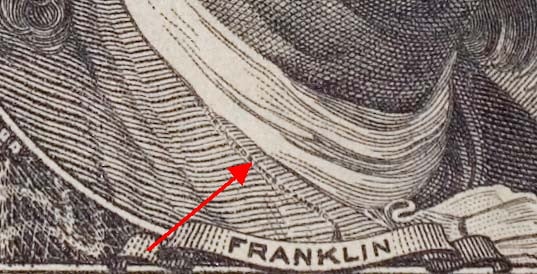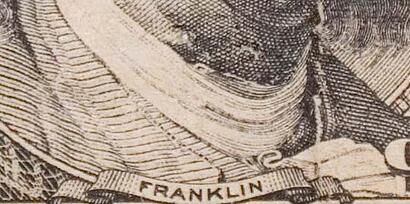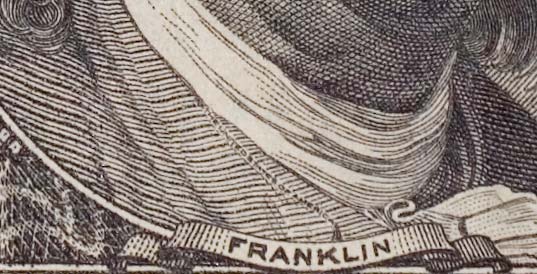(This is the third post in our counterfeit money series. The U.S. dollar printing machinery that allows use of rainbow color-changing ink can also create some extremely fine printed detail. On close inspection, the portraits on $100 dollar bills particularly reveal curved lines and even "hidden" writing.
Take a look at this detail from a real C-note.

A thin layer of microprinting can be seen in the lapel of Franklin’s jacket. Fine lines that almost look like threads in the jacket run horizontally across the portrait, and the words “The United States of America” appear around the collar.

Similar micoprinting also appears with the words "USA 100" inside the numbers of the lower left "100" of the bill. Fine details of this sort are created by stamping ink on paper using steel plates at very high pressures, and are quite difficult to accurately reproduce. The process, called Intaglio printing, also produces an embossed raised-ink feel to the paper: you can literally feel the picture by moving your fingers over it.
Counterfeit notes will typically have very unclear printing. In most cases, the lines will be blurred or broken, and words around the collar will not discernible. A typical fake would look something like the picture below.

You don't need a magnifying glass to tell that something is wrong here. Anytime you see blurred or unclear images around the portrait, even if you can't tell exactly where it is wrong, you are most likely dealing with a counterfeit.


